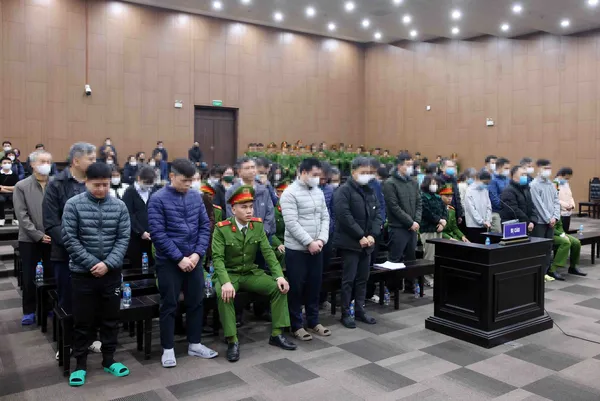 Opinion
Opinion

Dr Hoàng Đình Cảnh, deputy director of the Việt Nam Authority of HIV/AIDS Control, speaks to Vietnam News Agency about the country’s efforts to increase early HIV screening tests, as an estimated 20 per cent of HIV sufferers do not know they are infected.
Dr Hoàng Đình Cảnh, deputy director of the Việt Nam Authority of HIV/AIDS Control, speaks to Vietnam News Agency about the country’s efforts to increase early HIV screening tests, as an estimated 20 per cent of HIV sufferers do not know they are infected.
Can you update our readers on the HIV/AIDS situation in Việt Nam in 2017?
In the first nine months of 2017, more than 6,880 people tested positive for HIV, of which over 3,480 have turned AIDS. We recorded 1,260 deaths of people with HIV. It is estimated by late this year, the number of new cases of people living with HIV will be about 9,800 while the number of deaths will climb to some 1, 900.
According to the latest report on people living with HIV in 2017, 22 per cent of patients are women, while 78 per cent are men. The transmission route for 58 per cent of patients is sexual activity. Blood transfusions account for 32 per cent and mother-to-child transmission for 2.6 per cent. The route for 8 per cent of patients is undetermined.
Regarding the age group distribution, some 40 per cent of the HIV positive people detected in 2017 are between 30-39, 30 per cent are in the age group of 20-29, 19 per cent in the age group of 40-49, 6 per cent are over 50, 3 per cent are from 14 to 19 and 2 per cent are children under 13 years old.
The demographic characteristics of people living with HIV/AIDS in 2017 is almost the same as in 2016.
In the first nine months of 2017, the number of new HIV cases fell 1.1 per cent compared to the same period in 2016. Meanwhile the number of new AIDS patients was also reduced by 39 per cent and the fatality rate among people with HIV/AIDS dropped by 10 per cent.
In some provinces, over 10 per cent of pregnant women were HIV positive. This is due to the lack of early HIV/AIDS detection services for people, especially women who might become pregnant.
Another point I want to mention here is the increasing transmission of HIV through unsafe sex, particularly among young people.
Will you please further explain the significance of early HIV testing?
As we all know the HIV virus can exist in the human body with few or no symptoms for 12 to 13 years, so people with HIV still live a normal life. Their HIV status is only revealed if they have a blood test.
In our country up to 20 per cent of people living with HIV do not know that they are HIV positive as they don’t go to health clinics for blood tests.
If they know that they are HIV positive, they can take preventive measures to protect their sex partners, family members and other people.
At present, we do not have any drug that can cure HIV, but anti-retroviral (ARV) drugs are available to help people with HIV prolong their healthy life while reducing the possibility of transmission to other people. People living with HIV should take ARV as described by their doctors.
The latest scientific research has confirmed that if an HIV patient takes ARVs regularly, the chance of HIV transmission to their sex partner will drop by 96 per cent.
Early detection of their HIV status will help the infected people enjoy good treatment and take action to reduce the risk of secondary infection. As a result, they can save quite a lot of money they’d have to spend on drugs, check-ups and hospital visits.
Will you please further explain Việt Nam’s targets of 90-90-90 by 2020?
The targets 90-90-90, set in 2014, mean that by 2020 90 per cent of HIV infected people will know their infection status, 90 per cent of HIV positive people will receive ARV drugs and 90 per cent of people taking ARV drugs will have a low HIV load.
According to a September 2017 report, there are 208,371 people who know they are living with HIV/AIDS in Việt Nam. This figure represents about 75 per cent of the estimated total figure of people living with HIV in the community.
So we will have to do quite a lot of work to achieve the target that 90 per cent of HIV infected people know their infection status.
Currently, we have 1,345 health clinics providing services of counseling and testing for HIV positive people. 128 HIV labs in 63 provinces and cities are authorised to confirm HIV status for their clients, plus 1,250 laboratories are able to screen HIV tests in all district hospitals nation-wide.
In addition, the Ministry of Health has scaled up community-based HIV testing services, focusing on 15 cities and provinces with large numbers of HIV infections; and piloted HIV self-testing in which people can perform a test on a sample of their saliva at community-based institutions. We hope through such activities we’ll be able to detect more people with HIV and give them proper treatment. — VNS




